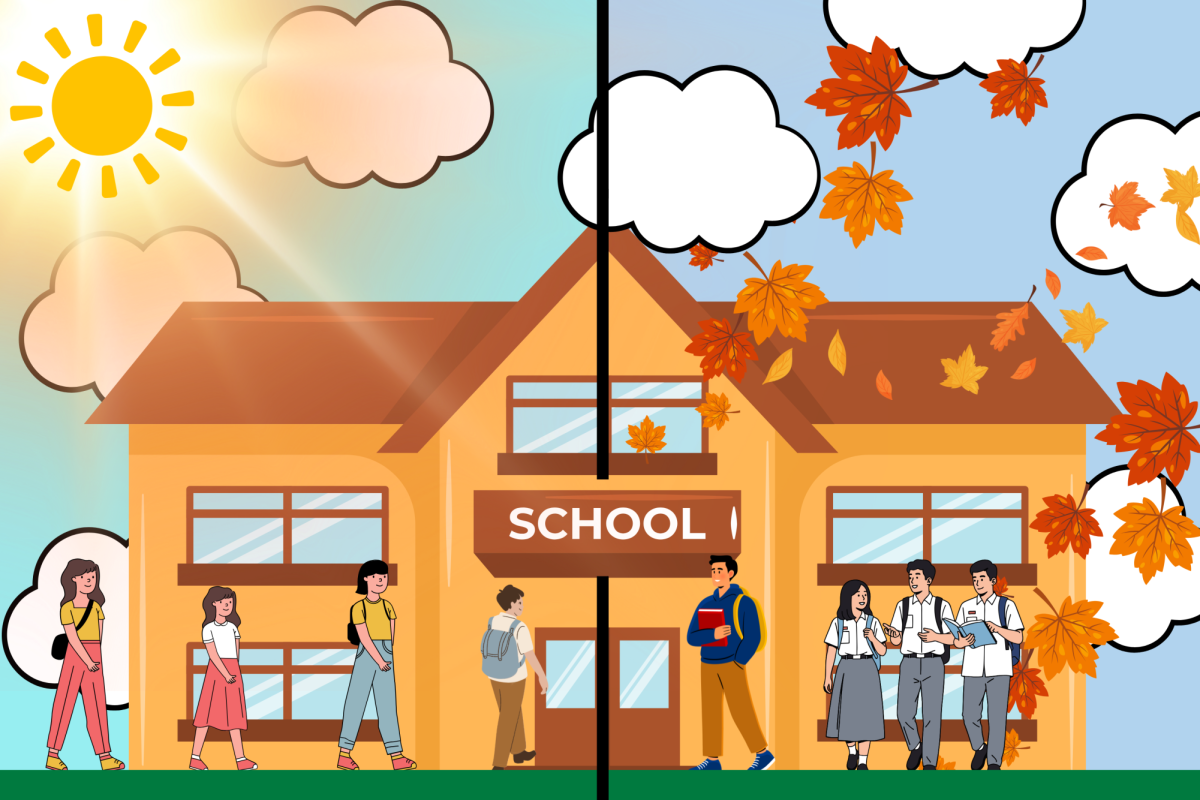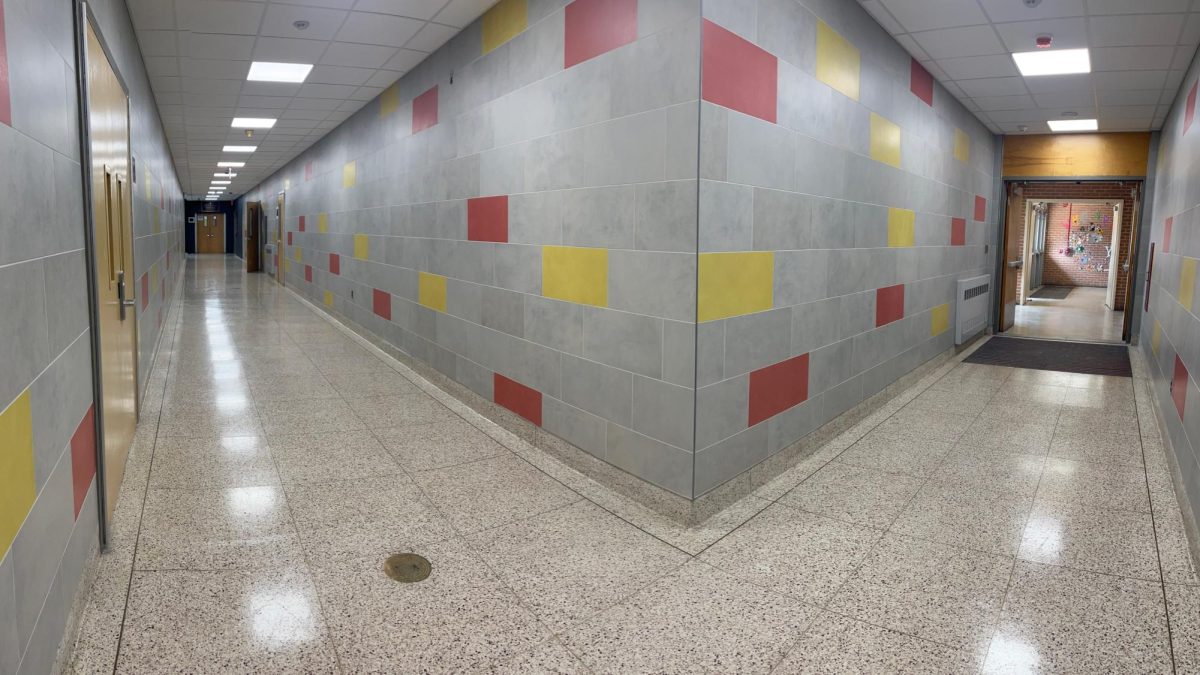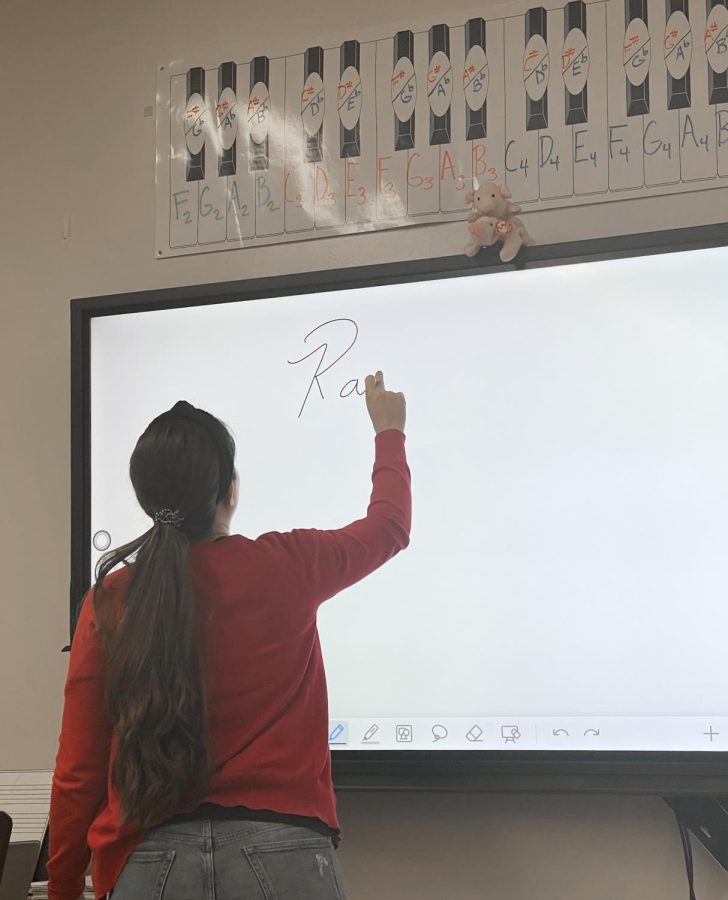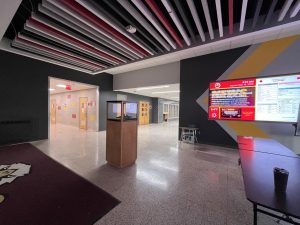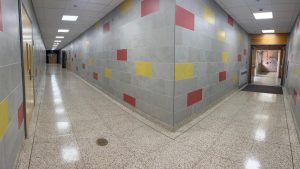How Technology is Shaping Education
Mrs. Brittney Milicia used the whiteboard feature on the Newline Board to list what to play during class.
November 4, 2022
Technology has swiftly found its way into every crevice of our lives: from communicating with family and friends to advancing vast industries, life without technology has become unimaginable. For the teachers and students of EHS, this shift has made its presence known in their approach to education.
The early years of EHS consisted of limited technology, extending at most to overheads, filmstrip projectors, and mimeograph machines. Overhead projectors, used until the 2000s, would display a teacher’s work that was done on transparency onto a screen through a lens. Meanwhile, filmstrip projectors showed a few images for material such as presentations or videos. Mimeograph machines, prevalent in the 1970s, were duplicating machines that required teachers to make handwritten or typed stencils and force ink through the stencil. This process was used every so often to produce class materials.
At this point, education was dependent on textbooks as teachers did not have access to an extensive database of alternate resources available today. In addition, more emphasis was placed on memorization rather than conceptualization because the convenience of searching minor, yet crucial, details on the internet was not plausible. “An example of this would be unit conversions. In the past, it was important for students to memorize the equivalencies and although it is quicker to have them memorized, it takes little time to look up an equivalency when needed,” says Ms. Robin Connell, a Physics teacher and one of the longest-tenured staff at EHS.
As the world progressed, so did the technology at EHS. Copy machines replaced mimeographs. Promethean boards replaced overhead projectors. Media centers replaced some textbooks. Instant information was no longer far-fetched; instead, it was becoming increasingly closer to the grasp of students and teachers. Teachers could present more material using effective devices and grade more efficiently while students could gain new resources.
Now, technology is almost entirely embedded in the classrooms. Students cannot participate in a full day of school work without a MacBook, and teachers depend on the Newline boards to relay the day’s lesson. It has even expedited processes in subjects that comprise of hands-on learning. “Having experts demonstrate various techniques and current information being readily available for resources are unexpected ways technology has made a presence in the classroom,” says Ms. Kathleen Hendricks, the Family and Consumer Sciences teacher and another longer-tenured staff at EHS. Another example highlighted by Ms. Connell is the improvement of students’ involvement in the scientific process, explaining that experimentation has become less demanding which allows for data analysis to become more prominent.
The pandemic is a significant example of the dependence on technology in our education system today. All classes, assignments, and lessons were communicated through online learning and zoom meetings. Without technology, students would have missed out on a substantial amount of education during the pandemic. The effects of online learning are still seen in the lives of students and teachers, despite the switch back to in-person learning. Collaboration with virtually anyone is feasible thanks to online meetings. “For example, last year the preschoolers were able to zoom with the author of a children’s book,” said Ms. Hendricks. In addition, students do not need to be in the same room anymore to complete projects or to study.
Still, there are some downsides that come with this integration: “They are not writing on paper as much and handwriting has been greatly affected. I feel students today, with all of these resources, are less organized than they were in the past,” says Ms. Connell.
Overall, the up-and-coming technologies have undoubtedly molded education throughout the years and will continue to do so for years to come.



















